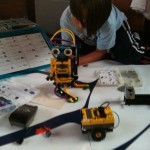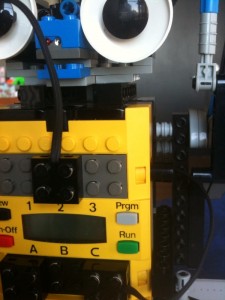
Sometimes I think, “aren’t I just letting my kids fool around on the computer and play with toys? What are they really learning?”
For starters, they are fooling around and having fun, but I also know that programming and robotics are “thinking development” tools. They require kids to solve problems, anticipate outcomes and come up with solutions. They reward logic. They build real life thinking skills that apply to any area of study. I am always amazed by what they can do and how hard they are willing to work to make their an imation or robot do what they want it to do.
imation or robot do what they want it to do.
Creativity is also highly rewarded. Making an animation or video game, designing and building a robot – these are very creative activities and they allow kids who are surrounded by technology and digital media to make something of their very own. Knowledge is power. Self expression is a form of power, and empowered kids are happy kids.
This is fun, low stress learning in a hands on, do it yourself environment. Programs and robots give kids immediate feedback on their performance – it worked, it didn’t work, it gave an unexpected result. There’s no grading – you just work at it till you get the job done. I’m amazed at how much effort kids will put into solving a problem if it involves completing their video game or making their robot move. Its funny, but I never see that kind of focus put into emptying the dishwasher or putting away their clothes.
Like most parents, I worry about my kids education – will they be prepared for the future, are they getting enough math, science and engineering at their school? I don’t have a crystal ball, but I think being tech savvy and knowing a little programming will help any kid in the future. I think all kids should learn a simple programming language like Scratch in elementary school and Greenfoot or similar in middle school. I think kids need to grow up comfortable with the idea of learning new computer languages. Robotics is a great way to teach physics and engineering. The basics behind technologies like sensors, actuators, and power sources can all be learned with robotics, and I hope all schools can add this to their curriculum. In the meantime…
I’ll work on making this true in my local school system, and I’m teaching classes to catch the kids who might not get this otherwise.
For more on exactly what I think kids can get from Scratch see “What can kids learn from Scratch that applies to other programming tools.”
For more on Robotics see “Robotics is not for Reading”.


